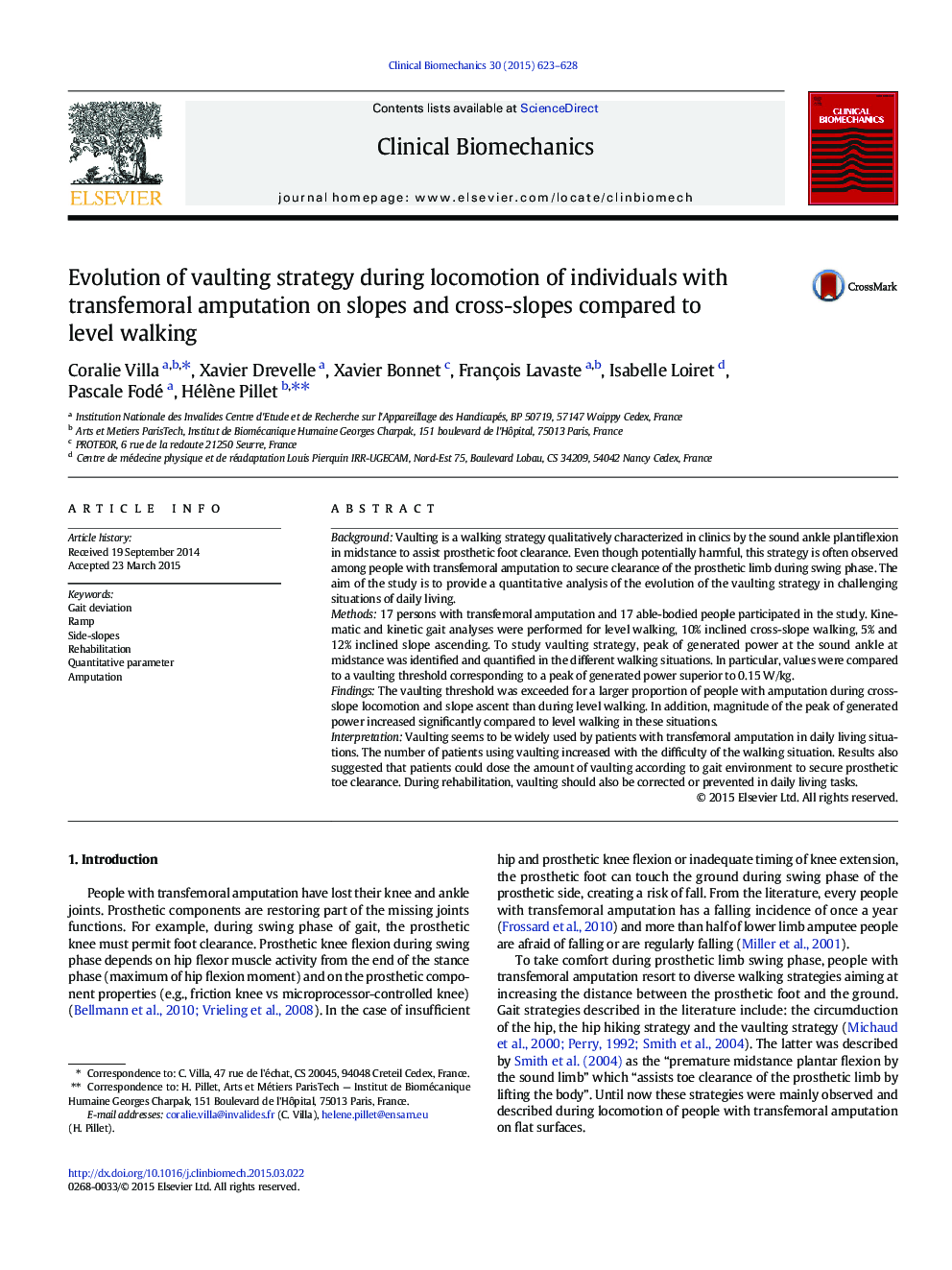| Article ID | Journal | Published Year | Pages | File Type |
|---|---|---|---|---|
| 4050247 | Clinical Biomechanics | 2015 | 6 Pages |
•Identification & quantification of vaulting in people with transfemoral amputation•Number of patients using vaulting increases with the difficulty of the situation.•Cross-slopes and slope ascent exacerbate the use and quantity of vaulting gait.•Vaulting should also be considered in challenging situations in rehabilitation.
BackgroundVaulting is a walking strategy qualitatively characterized in clinics by the sound ankle plantiflexion in midstance to assist prosthetic foot clearance. Even though potentially harmful, this strategy is often observed among people with transfemoral amputation to secure clearance of the prosthetic limb during swing phase. The aim of the study is to provide a quantitative analysis of the evolution of the vaulting strategy in challenging situations of daily living.Methods17 persons with transfemoral amputation and 17 able-bodied people participated in the study. Kinematic and kinetic gait analyses were performed for level walking, 10% inclined cross-slope walking, 5% and 12% inclined slope ascending. To study vaulting strategy, peak of generated power at the sound ankle at midstance was identified and quantified in the different walking situations. In particular, values were compared to a vaulting threshold corresponding to a peak of generated power superior to 0.15 W/kg.FindingsThe vaulting threshold was exceeded for a larger proportion of people with amputation during cross-slope locomotion and slope ascent than during level walking. In addition, magnitude of the peak of generated power increased significantly compared to level walking in these situations.InterpretationVaulting seems to be widely used by patients with transfemoral amputation in daily living situations. The number of patients using vaulting increased with the difficulty of the walking situation. Results also suggested that patients could dose the amount of vaulting according to gait environment to secure prosthetic toe clearance. During rehabilitation, vaulting should also be corrected or prevented in daily living tasks.
